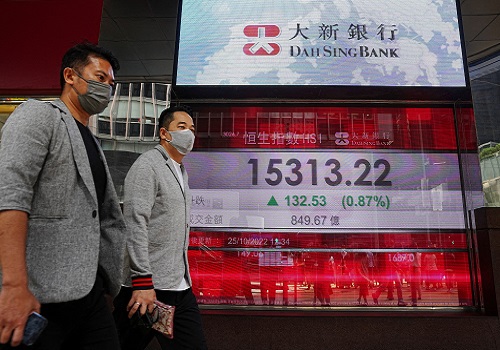Stocks slip as focus falls back on Fed

Follow us Now on Telegram ! Get daily 10 - 12 important updates on Business, Finance and Investment. Join our Telegram Channel
Stocks eased on Wednesday, while the dollar was under a little pressure, as traders shifted focus from U.S. banking stress to expectations for an imminent peak in the Federal Reserve's interest rate cycle.
MSCI's index of Asia shares outside Japan dropped 0.5% to retreat further from Monday's two-month high, and in morning trade Japan's Nikkei looked set to snap an eight-day winning streak with a modest 0.4% loss.
Overnight, the S&P 500 scraped a 0.1% gain. Bank of America's first-quarter profit beat forecasts, and shares rose, following strong results at rivals that seem to have soothed market concerns about the sector's stability.
"So far the major banks that have reported have largely helped to settle market nerves," said Khoon Goh, head of Asia research at ANZ in Singapore. "With those stresses easing away, markets are now back to focusing on the Fed."
To that end a slew of Federal Reserve speakers are in the frame this week ahead of the pre-meeting blackout period preceding May's policy announcement that begins on the weekend.
The Fed's "beige book" of economic conditions is published later on Wednesday and appearances are due from Chicago Fed President Austan Goolsbee and New York Fed President John Williams.
Markets are pricing an 86% chance the Fed raises rates by 25 basis points at the May meeting, and that wasn't swayed terribly much by conflicting outlooks from two non-voting Fed officials on Tuesday.
St Louis Fed President James Bullard told Reuters the Fed ought to keep raising rates to subdue persistent inflation. Atlanta Fed President Raphael Bostic told CNBC he thinks the Fed should hike one more time then pause to consider the next move.
Traders have been tiptoeing out of bets that rate cuts will fairly swiftly follow a final hike, though remain positioned for a peak.
The inversion between three-month Treasury yields and 10-year yields, at more than 160 bps, is the deepest since 1981 when the Fed funds rate was climbing down from a mid-year peak of 19%. [US/]
Ten-year yields were last at 3.5851%.
The prospect of peak rates has been applying downward pressure on the U.S. dollar. Better-than-expected growth data in China and hot British wages added to that earlier in the week.
British and European inflation figures due later on Wednesday could add more if they make a case for hikes on the Atlantic's eastern shores to go on beyond those in the U.S.
Sterling hit a 10-month high of $1.2545 last week and bounced with Tuesday's wages data. It was last at $1.2410. The euro hit a one-year high above $1.10 last week and lurked at $1.0966 in Asia trade on Wednesday.
Elsewhere, Brent crude futures were steady at $84.79 a barrel, roughly where they have traded for a few weeks since OPEC+ announced surprise production cuts. Gold held above $2,000 an ounce and bitcoin above $30,000.
S&P 500 futures slipped 0.2% in the Asia session while European futures were flat.
Citi strategist Matt King warned that markets' calm may be shortlived as central banks' cash injections made to ward off worries about systemic bank risks start to wear off.
"This held down real yields, propped up equity multiples, and tightened credit spreads in the face of falling earnings expectations," he said.
"High-frequency liquidity indicators suggest this is already stalling, and coming weeks seem increasingly likely to bring a sharp reversal."












 320-x-100_uti_gold.jpg" alt="Advertisement">
320-x-100_uti_gold.jpg" alt="Advertisement">












